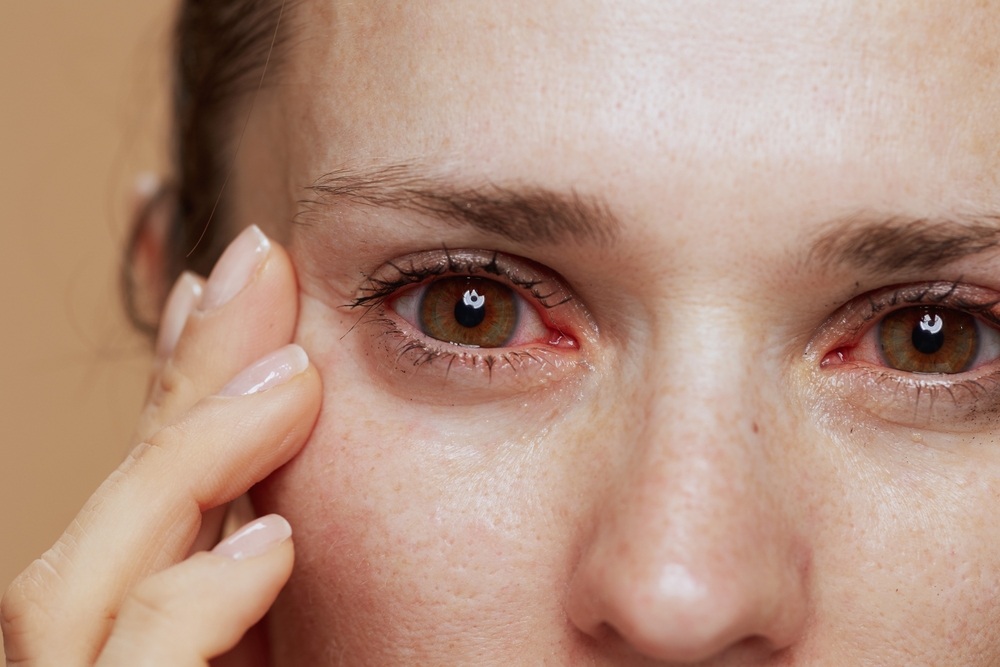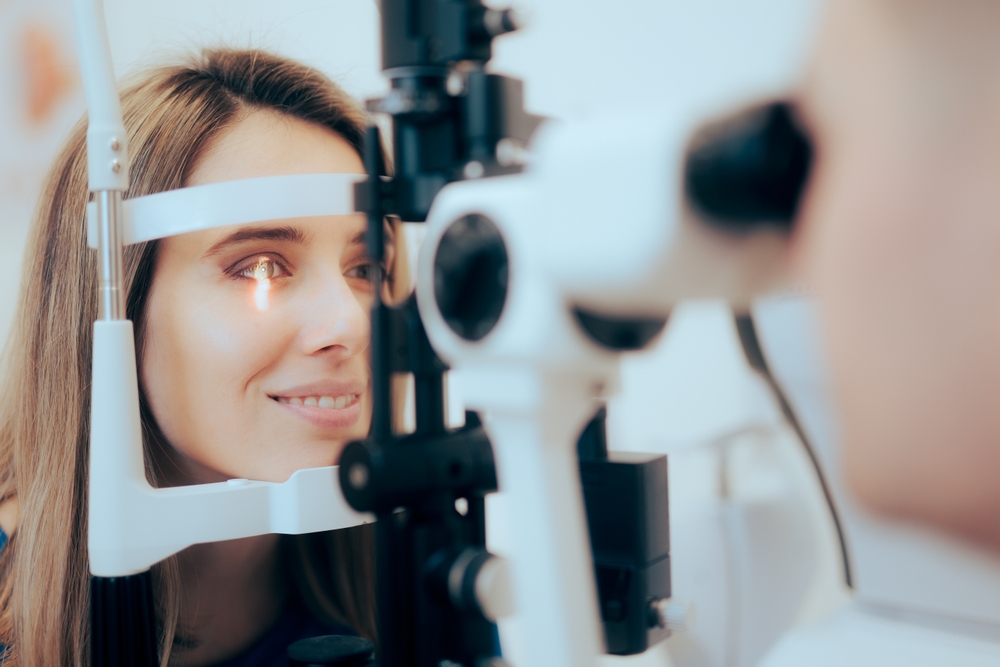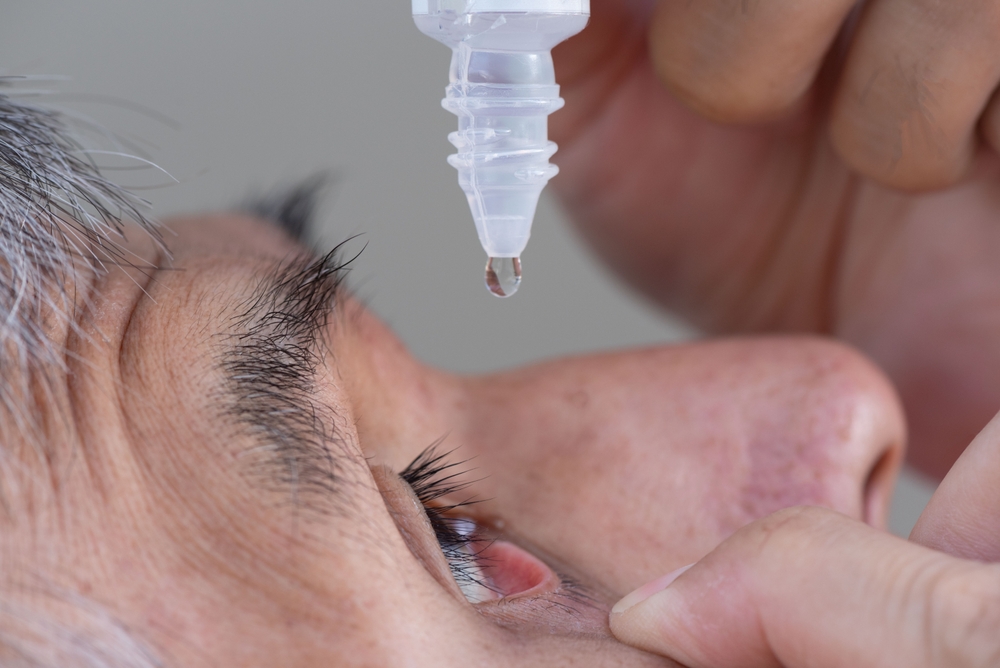Posted by: Focal Point Vision in Uncategorized

Dry eye syndrome is a common condition that affects millions of people worldwide. Characterized by irritation, redness, burning, and blurred vision, dry eye can significantly impact daily life for those experiencing it.
Although dry eye can happen to anyone, there are certain groups who are at an increased risk. Keep reading to learn more about dry eye, including who is most at risk for this eye condition!
What Causes Dry Eye?

Dry eye occurs when the eyes do not produce enough tears or when the tears evaporate too quickly. This often happens naturally with age as tear production slows down or glands become clogged.
Other common causes include staring at digital screens for too long without blinking, contact lens wear, side effects of medications, inflammatory conditions, hormone changes, and environmental conditions such as wind and air conditioning. Intense heat, sunlight, pollution, or smoke exposure can also accelerate tear film evaporation, resulting in dry eyes.
Sometimes, the exact cause is difficult to pinpoint, but risk factors like gender, genetics, and diet can predispose individuals to dry eye syndrome as well. Keeping the eyes lubricated with drops helps reduce irritation.
How Do I Know If I Have Dry Eye?
You may be experiencing dry eye if your eyes frequently feel gritty, scratchy, burning, or overly watery. Dry eye symptoms also commonly include stinging, redness, blurred vision that fluctuates, and sensitivity to light.
You may notice these eye discomforts become worse while doing activities like reading, driving, staring at screens, or in places with low humidity. Signs to help identify dry eye include eyedrop use needed more than twice a day, eyelids sticking together upon waking, eyelid bumps called blepharitis, and visible tear film instability.
Persistent irritation with no infection also signals potential dry eye requiring evaluation for appropriate diagnosis and management.
How Do Eye Doctors Diagnose Dry Eye?

The most reliable way to diagnose dry eye is through a comprehensive eye exam by an experienced eye doctor like those at Focal Point Vision. During your appointment, the eye doctor will first review your symptoms and medical history, taking note of any factors that may be contributing to dryness, like medication use, previous surgeries, or health conditions.
They will then conduct an exam with a special microscope, called a slit lamp, to closely inspect your eyelids, glands, cornea, and tear film. Tear production and stability may be measured by placing tiny strips in the lower eyelids.
Your eye doctor can also evaluate inflammation levels related to dryness. Based on all exam findings and your reported problems with irritation, blurry vision, sensitivity, or excessive watering, your eye doctor will determine if a diagnosis of dry eye syndrome is warranted.
This comprehensive exam will allow them to pinpoint underlying causes and customize treatment recommendations to manage your dry, uncomfortable eyes effectively.
Am I At Risk For Dry Eye?
While dry eye can affect anyone, certain factors put you at increased risk. Age is a major contributor, since natural tear production can decrease as you get older and the oil glands that keep tears stable may clog up as well.
Gender also plays a role, as hormonal changes due to menopause, pregnancy, and the menstrual cycle can trigger ocular dryness for some women. Prolonged digital screen use, contact lens wearing, LASIK surgery, and taking certain medications, especially antihistamines, diuretics, and antidepressants, can also cause some people to experience dry eye.
Besides these common culprits, environmental conditions like air conditioning, low humidity, pollution, or smoke can also exacerbate dryness issues. Autoimmune disorders, vitamin deficiencies, facial nerve damage, and blink disorders may also disrupt tear film stability.
If you experience irritation or fluctuating vision and have any of these risk factors or underlying medical problems, it’s important to be evaluated right away.
What Are My Dry Eye Treatment Options?

If you are struggling with dry, irritated eyes, there are several effective treatment options available. The most common and accessible treatment is over-the-counter artificial tear drops or gels that can be used as often as needed to supplement natural tears and lubricate the eyes.
These provide temporary relief and moisture but don’t address underlying issues causing dry eye. Prescription anti-inflammatory eye drops may be necessary to reduce swelling of eyelid oil glands and stimulate better tear secretion over time.
Hot compress therapy applied to the eyes encourages blocked glands to open up as well. Making simple lifestyle changes can significantly ease dry eye discomfort, too, like taking consistent screen breaks, staying hydrated, adjusting computer monitor position, using a humidifier, and avoiding indoor pollution or cigarette smoke.
More advanced dry eye treatments may also be available. During a consultation, your eye doctor can review all these methods for managing troublesome dry eye based on your symptoms and eye health evaluation.
Do you think you might be at risk for dry eye? Schedule an appointment at Focal Point Vision in San Antonio, TX, today!
